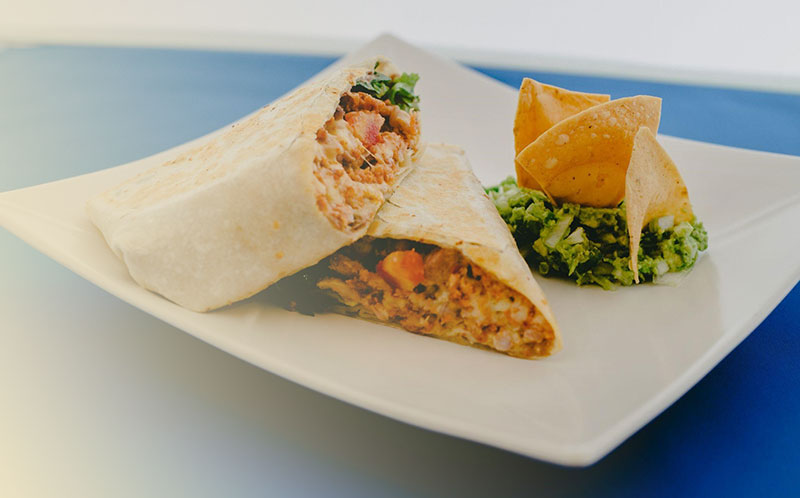Food’s purpose is to fuel our bodies. But this is 2024 and we’ve come a long way from simple nourishment, simple flavors, and limited ingredients.
Cuisine isn’t just about taste. It’s a symphony of experiences that begins with the name on the menu. The way restaurants and meal kit companies name their dishes can elevate the experience, setting the stage for the flavors to follow.
In today’s competitive culinary landscape, effective food branding and naming have become crucial in capturing and retaining the interest of consumers. This blog post dives into the latest trends in food naming and branding, illustrating how forward-thinking approaches can create standout menus.
The Importance of Food Branding and Naming
In the culinary world, a name can make all the difference. When you see “Grandma’s Secret Apple Pie” on a menu, it evokes warmth, nostalgia, and a craving for comfort food.
The name sets expectations and sparks curiosity. Effective food branding and naming can differentiate a product, attract a target audience, and ultimately drive sales.
Building a brand around food involves more than just coming up with catchy names. It’s about creating a narrative that resonates with consumers, reflecting values such as sustainability, health, and community engagement.
That brand begins with the name of your establishment, whether it be a taco food truck or a classical French restaurant. For a chef, that’s probably the hardest part.
You know how to cook. You know how to add acid, heat, and salt to turn individual ingredients into the ideal ensemble for a select protein. Make it easy on yourself. Use a name generator for business. You may not go with what you find, but it will get the juices flowing. And we all know how important juices are!
Current Trends in Food Naming
Consumers are more conscious than ever about the origins of their food. Names that highlight local and sustainable sourcing can attract environmentally aware diners. “Farm-to-Table Salad” or “Locally-Sourced Beef Burger” signals that the ingredients are fresh and ethically sourced. This trend ties into the broader movement towards sustainability and supports the narrative that the restaurant or brand cares about the planet.
By showcasing the origin of ingredients in the name, businesses can create a sense of transparency and trust. It also allows them to charge a premium, as customers are often willing to pay more for food they perceive as healthier and more sustainable.
Restaurants and meal kits that emphasize these aspects in their naming are tapping into a powerful trend that aligns with modern consumer values.
Creative Use of Language and Puns
A playful approach to naming can make a dish more memorable and engaging. Puns and creative language not only catch the eye but also add an element of fun to the dining experience.
Think of names like “Lettuce Celebrate” for a salad or “Batter Up” for a fried chicken dish. These names stand out among standard menu items and can make a restaurant visit more enjoyable.
Creative naming also provides an opportunity to infuse personality into the brand. It reflects a sense of humor and creativity, making the dining experience feel unique and personal. This approach works particularly well for casual dining establishments and those targeting younger audiences.
Health and Wellness-Focused Menu Naming
With the rise of health-conscious consumers, naming that emphasizes wellness can be incredibly effective. Titles like “Detox Green Smoothie” or “Antioxidant-Rich Berry Bowl” instantly communicate the health benefits of the dish. This trend is particularly relevant for restaurants and meal kits that focus on nutritious, balanced meals.
By including health buzzwords in the names, businesses can appeal to fitness enthusiasts and those looking to maintain a healthy lifestyle.
It’s a way of signaling that the menu caters to their dietary needs, making it easier for them to make informed choices. This strategy can help build a loyal customer base among health-conscious diners.
Branding Strategies in the Culinary World
A strong visual identity complements effective naming, creating a cohesive brand experience.
From the logo to the menu design, colors, fonts, and imagery should reflect the brand’s personality and values. For instance, a rustic farm-to-table restaurant might use earthy tones and hand-drawn illustrations, while a modern eatery might opt for sleek, minimalist designs.
Engaging with the Community
Hosting events, sponsoring local initiatives, or collaborating with local artists can strengthen the bond between a business and its community. Names that reflect local culture or landmarks can further this connection, making the brand feel like an integral part of the community.
It shows that the business cares about more than just profits and is invested in the well-being of its customers. This approach can lead to word-of-mouth promotion, one of the most effective forms of marketing.
Incorporating Technology for a Seamless Experience
Incorporating technology into the dining experience can enhance brand perception and efficiency. Mobile apps, online ordering, and digital menus can provide convenience and streamline operations. Names that hint at technological integration, like “Smart Order Salad” or “Quick Click Pizza,” can attract tech-savvy customers.
Wrapping It All Up Like a Fat Burrito
The art of food branding and naming is an essential element in the culinary world that can significantly influence consumer perceptions and business success. By crafting thoughtful and strategic names, restaurants and food brands can evoke emotions, communicate values, and differentiate themselves in a highly competitive market.
Current trends such as sustainability, health consciousness, and creative language capture the zeitgeist and serve as potent tools to attract specific target audiences. A cohesive branding strategy that aligns visual elements and community engagement tactics with naming can also strengthen a brand’s identity and foster loyalty.
Embracing these approaches ensures businesses remain relevant and appealing to new and existing customers. Combining innovative naming, consistent branding, and technology integration will create a restaurant’s brand identity like a perfectly crafted burrito.

